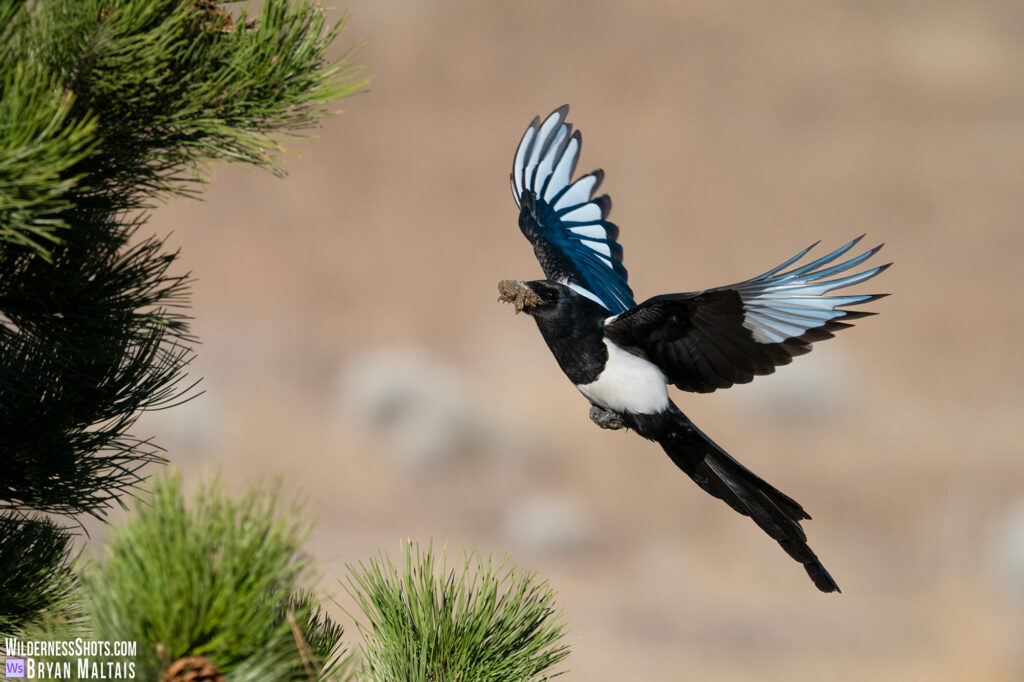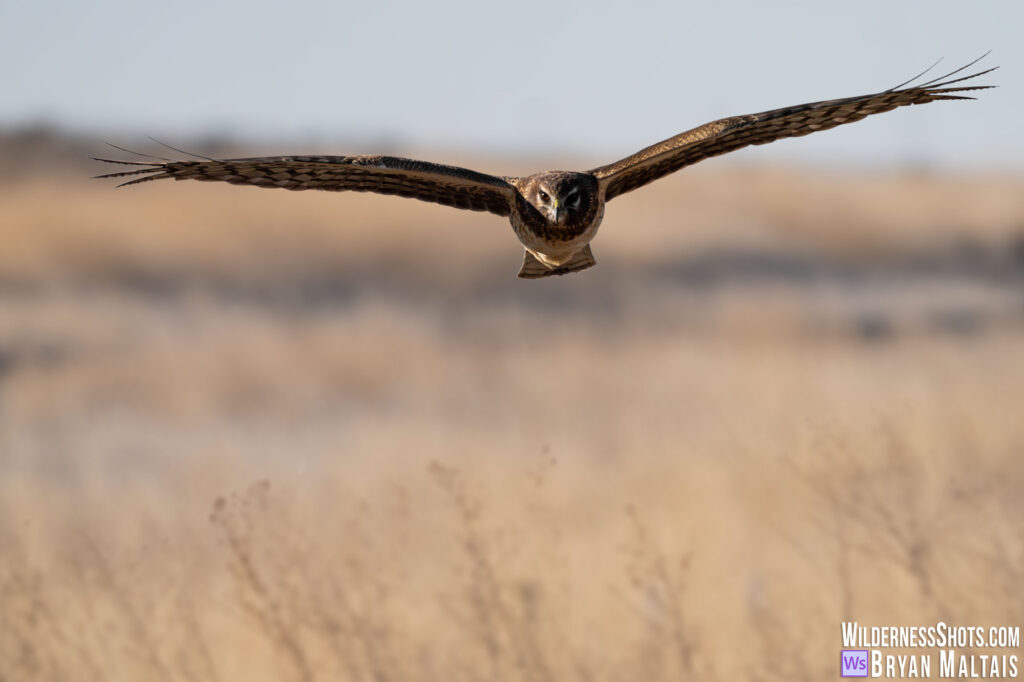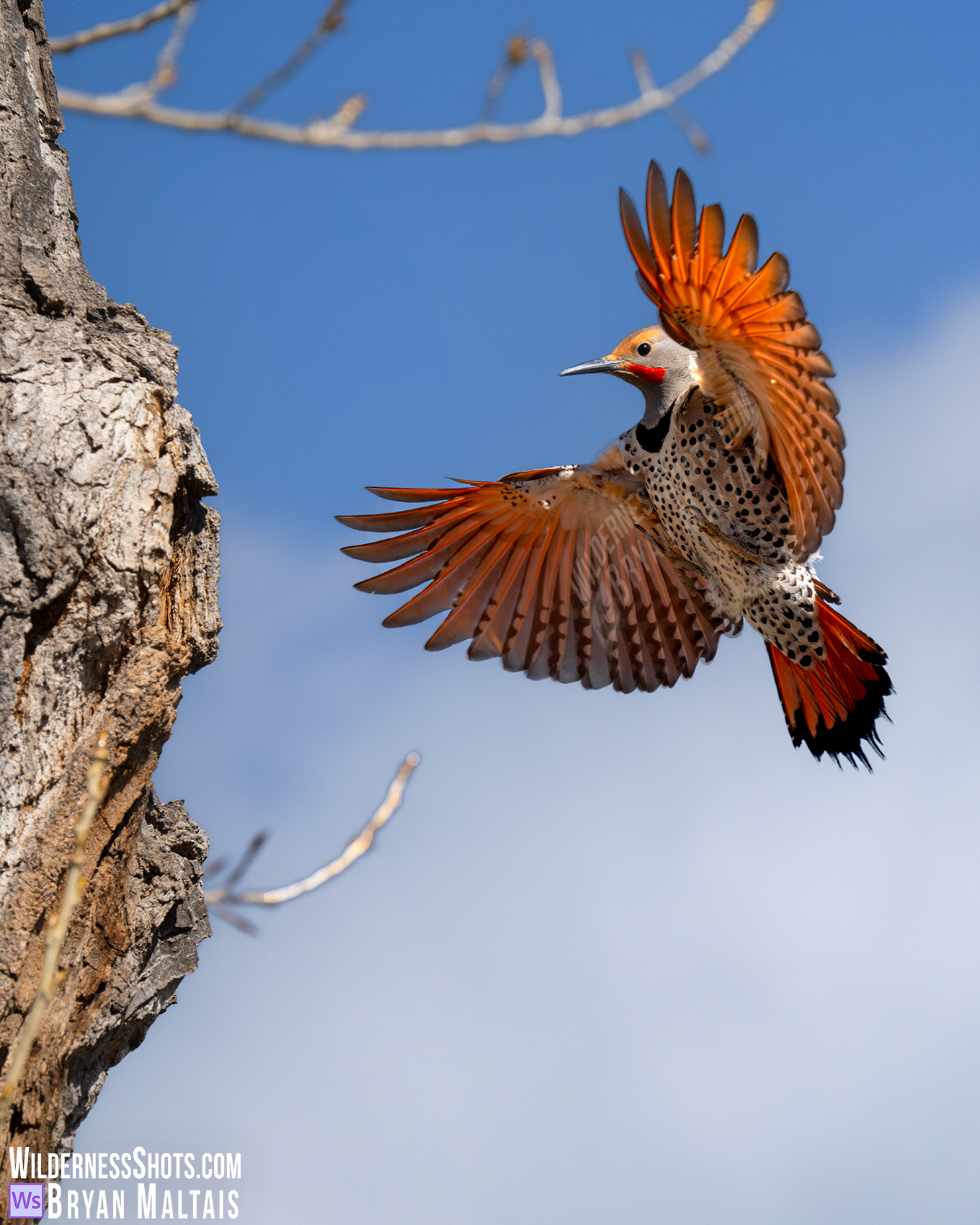
Northern Flicker landing on Cottonwood Tree. f/11, 1/2500th sec, ISO 1600. Sony A7rV + Sony 200-600mm lens.
The beauty of bird photography is that it’s an adventure that can be had without leaving your home. While connecting with nature in your own backyard, it’s also a stimulating technical challenge that tests your photography acumen. There are generally 3 types of bird photography; still portraits, birds in flight, and birds landing on a perch. The settings and techniques to capture each are vastly different. Photographing birds landing on a perch is a unique opportunity to capture them in flight with their wings spread because they usually predictably return to the same spot where you can set up and be ready. I recently had a prime chance to capture beautiful Northern Flickers landing on an old Cottonwood behind my house. They were attracted by a crevice in the trunk, presumably filled with food.
How to Photograph Birds Landing on a Perch
Unlike capturing birds in flight where you pan along with them, to photograph birds that repeatedly land on the same perch, you set your camera on a tripod and manually fix focus on a spot they fly through just before landing. As they approach, you fire the shutter on high continuous frame-rate. With luck, the bird passes through the plane of focus at exactly the moment a frame was shot. Using auto-focus of any kind doesn’t work in this case because small birds simply come in too fast. You’re more likely to end up with a sharp photo of the background than the bird. It also helps to use a remote to trigger the shutter. Otherwise, you have to stand behind your camera for hours with your finger on the button. With a remote, you can sit back with your favorite beverage and enjoy the whole scene.
How to Focus on Birds Landing on a Perch
I watched the Flickers’ flight path as they approached the hole on the Cottonwood for a few days to frame a good composition and select a spot to fix focus on. I manually focused on a part of the tree’s bark that was in-line with the Flickers’ typical path of approach. Depth of field was about 5″. This was based on a shooting distance of 35 ft and using a 600mm lens at f/11. They approached either horizontally from out of the distance, or they fluttered down from a branch above where they were already perched. After some trial and error, I learned that when approaching horizontally, they land with their wings tucked, meaning I couldn’t get the shot of their orange feathers that I wanted. However, when dropping down from branches above, they spread their wings and use them more like a parachute, which is exactly what I was after.
Settings
The settings took a little bit of testing to dial-in. I always shoot wildlife in Manual Mode + Auto ISO. A shutter speed of 1/2500th sec was enough to freeze the birds in flight, though normally I aim for 1/3200th sec. I used f/11 for maximum DOF. The WB was set to Auto. I used spot metering on the tree bark because the sky caused matrix metering to underexpose the image. I set the frame-rate to continuous high. On my Sony A7rV, you get the option of shooting compressed RAW, which increases the frame-rate.
Success
It took a few days and many failed attempts to finally capture the shot above, but spending time in the fresh air beneath sunny skies was worth it.
Gear used (with links to Amazon):
- Benro Mammoth Tripod
- Oben Gimbal Head
- Pixel Remote Shutter Release
- Sony A7rV Camera
- Sony 200-600mm Zoom Lens
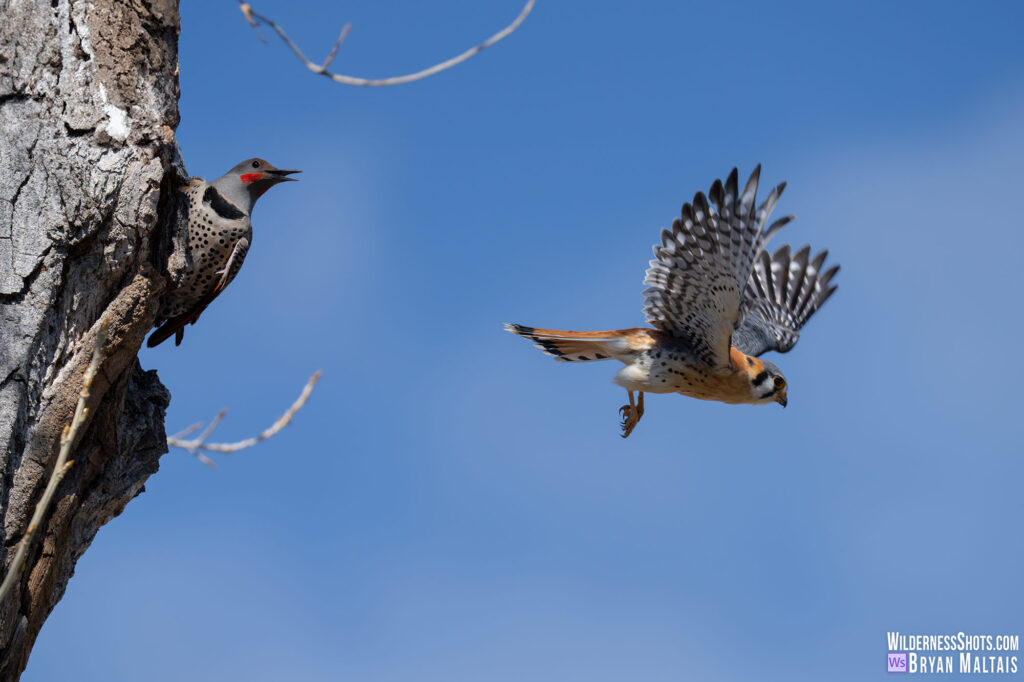 I frequently observe amazing and unexpected things when I sit still in the same spot. This Kestrel landed in the crevice to check it out no sooner than the male Flicker chased him off. Luckily my camera was focused on the spot and ready to shoot. The whole event happened in about 2 seconds.
I frequently observe amazing and unexpected things when I sit still in the same spot. This Kestrel landed in the crevice to check it out no sooner than the male Flicker chased him off. Luckily my camera was focused on the spot and ready to shoot. The whole event happened in about 2 seconds.
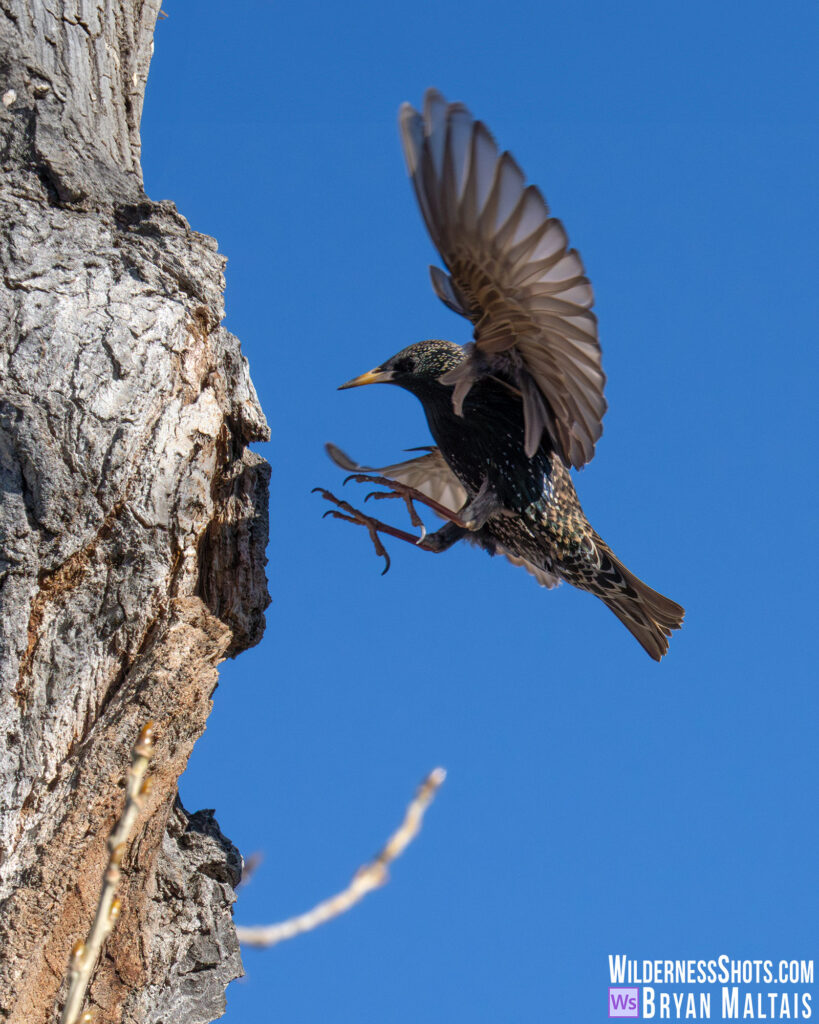 A lone European Starling also landed on the crevice.
A lone European Starling also landed on the crevice.
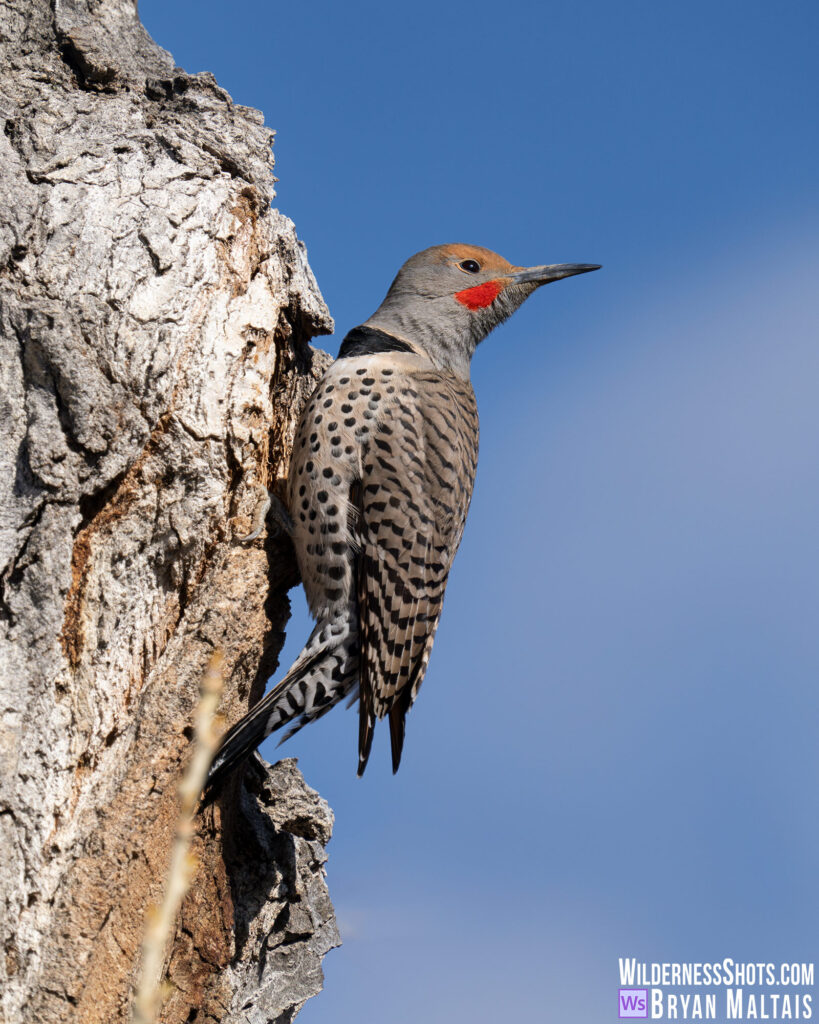 A male Northern Flicker.
A male Northern Flicker.
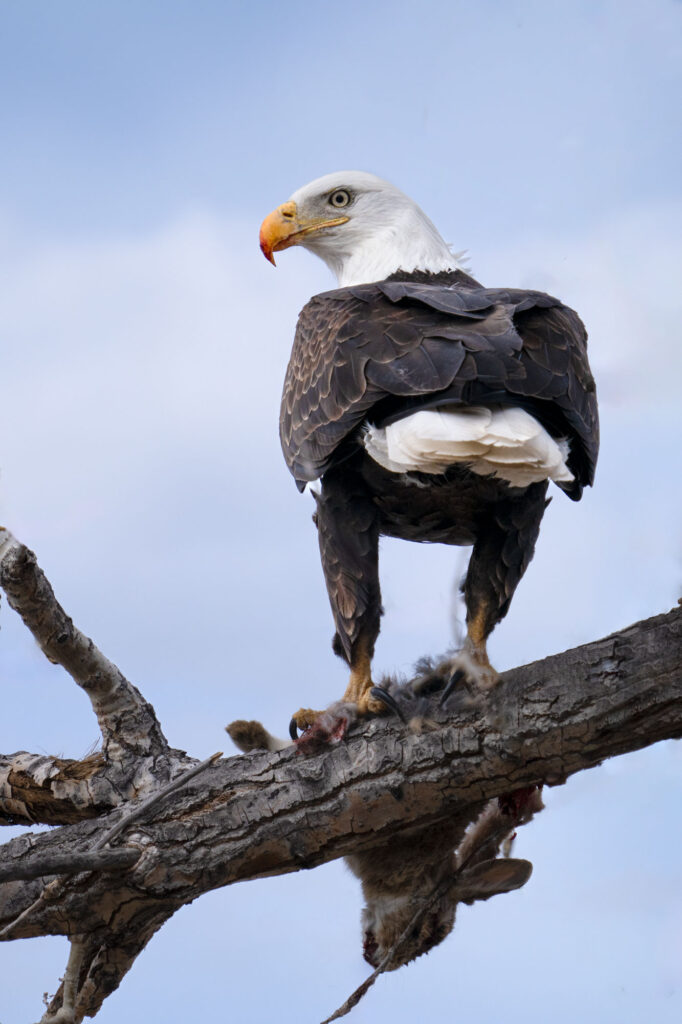 There were other cool birds nearby like Red-tailed Hawks, Cooper’s Hawks and Bald Eagles. As much as I was tempted to turn my camera on them, I had to stay focused on the Flickers or risk missing the shot. I went out separately a few times to shoot them. Amazingly, a Bald Eagle landed in the cottonwood with rabbit prey. There was also a Northern Harrier and Black-billed Magpie carrying mud in his bill to build a nest.
There were other cool birds nearby like Red-tailed Hawks, Cooper’s Hawks and Bald Eagles. As much as I was tempted to turn my camera on them, I had to stay focused on the Flickers or risk missing the shot. I went out separately a few times to shoot them. Amazingly, a Bald Eagle landed in the cottonwood with rabbit prey. There was also a Northern Harrier and Black-billed Magpie carrying mud in his bill to build a nest.

